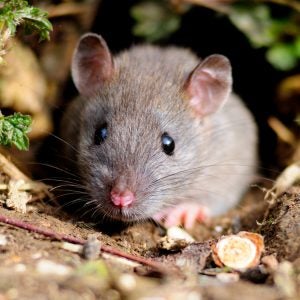
It is very difficult for untrained individuals to release an animal from a glue board without running the risk of inflicting further injuries, or possibly being injured themselves. Once unstuck, even if an animal appears unharmed, s/he could be injured in ways that aren’t immediately visible, or could need treatment for dehydration or extreme exhaustion.
In all cases, please treat an animal caught on a glue board as an emergency. Here are instructions on how to help an animal caught in a glue trap:
Whenever possible, the animal should be safely contained and immediately transported to a local wildlife rescue or vet. If you are unable to take the animal to either of those, this release method isn’t guaranteed, but it has been tried successfully. Please attempt it only in the event that you cannot take the animal to a trained professional. Wild animals can be dangerous at any time when handled, but especially so when they are trapped, terrified and defending themselves.
Supplies you will need:
a pair of thick gloves
a bottle of rapeseed or other cooking oil (baby oil can also be used, though it is not as effective)
a thick towel
a box or other secure container (with oxygen holes) in which to place the freed animal
1. Run hot water over the bottle for a couple of minutes until the oil in the bottle feels warm on your wrist, but is not hot enough to burn.
2. Put on the gloves. Gently restrain the animal near the head with a towel. (Place the towel near, but not over, the animal’s head.) Keep a firm but gentle grip on the animal.
3. With your other hand, gently massage the warmed oil into the animal’s fur, feathers or skin at the point where contact is being made with the board. It will take several minutes for the oil to start to soften the glue. Continue the massage until the animal becomes free from the glue board. This may take some time and a great deal of patience.
4. Continue to keep a firm but gentle grip and transfer him/her to the box or other container and transport as soon as possible to a wildlife rescue or vet. The animal should receive treatment for being “oiled,” as oil affects an animal’s ability to regulate his body temperature.
5. If there is nowhere local you can take the animal for professional treatment then keep him/her in a warm, dark, quiet and secure location until he/she is well enough to be released.
6. Offer sugar water via a dropper placed on the corner of the mouth so that the animal has the option of ingesting or not. Provide food such as oats, nuts, peanut butter on a piece of cracker or cereal, but it is unlikely the animal will eat when traumatised.
7. Resist the temptation to keep looking and checking: recovering animals need calm and quiet with minimal disturbance and interference.
